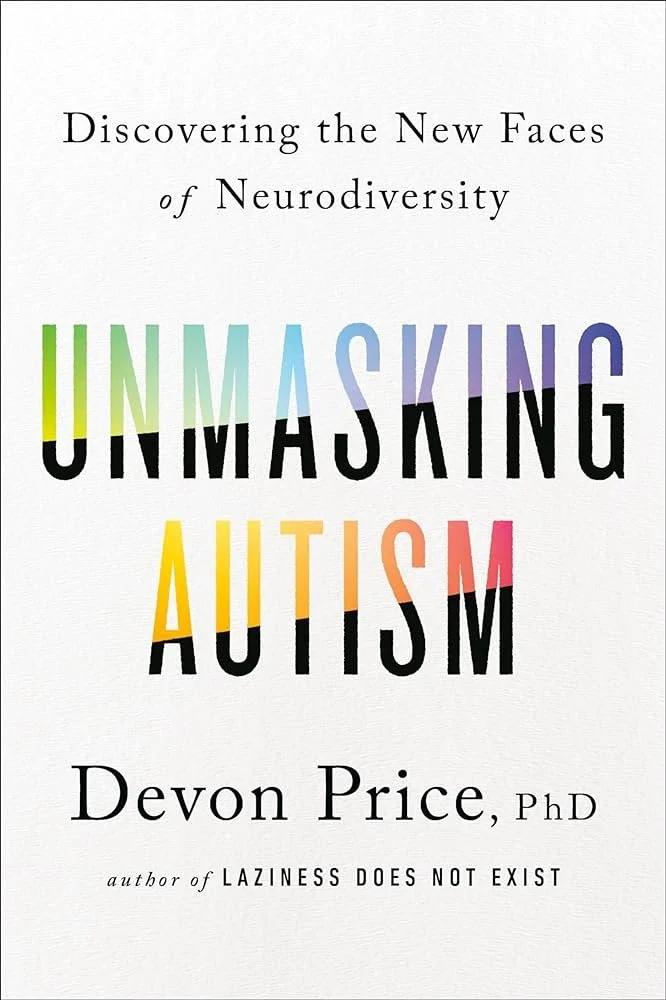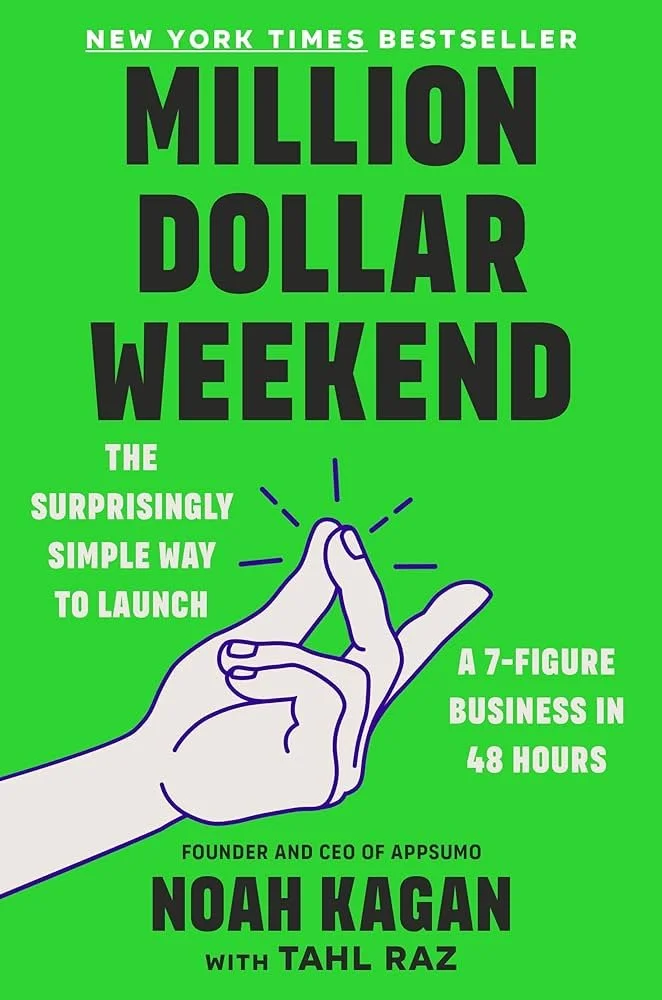Mid Year Book Update Part 2
Ok, time for the second batch of books. I am only doing 2 here so this should be a quick one. These are a bit random because I have an ever-growing book list and I share it with my wife. There are two major themes in my reading content: self-discovery and career and financial growth. This grouping oddly captures both, so buckle up.
Unmasking Autism by Devon Price, PhD
Why I Read This: I have a sneaking suspicion I might be, and some of my family members may also be, on the autistic spectrum. We haven’t been diagnosed, so I read this mainly to better understand the community.
What I Learned:
Insights into the Autistic Community: This book was full of insights into the autistic community and its many subgroups. It really helped me understand some of my own mannerisms and, some would say, superpowers.
Special Interests and Hyper-Fixation: One aspect I found very relatable was the need for special interests in this community (see my recent pottery fascination). The spectacular thing about this neurodivergence is that we LOVE to hyper-fixate on special interests. This means we become somewhat obsessed with a specific subject. This is quite common with history buffs or people who love very niche communities like online gaming and specific gaming categories, or in my case, pottery. This is my flavor of the week, and when you become hyper-fixated on something, you end up becoming extremely good and unrelenting when you are interested in the subject.
Info Dumping: Something somewhat related is called info dumping. This often happens when someone shows interest in the activity or subject and you (the person on the spectrum) start dumping information about your special interest. This is a fantastic experience if you are in a group that supports and is interested in learning about this specific interest. Unfortunately, there have been too many times where I’ve caught myself dumping to a neurotypical person, and their eyes glaze over as they quickly grab their phone out of their pocket or make up an excuse to run away from your information overload (this is probably another reason why I’ve read so many books on charisma).
Masking and Exhaustion: Another common trait for someone on the spectrum or neurodivergent is their lack of ability to read people’s emotions (see previous statement about reading lots of books about charisma). Many autistic people are masking. The masked autistic person is very hard to spot (see hyper-fixations and special interests) because we are so adaptable and know exactly how to “act normal,” but unfortunately the side effect is pure exhaustion. We can mask for a while; it’s much easier when drinking alcohol or in noisy spaces where you don’t have to talk as much (probably why I loved going to concerts, not parties), but eventually we crash, HARD.
Advocacy for Accessible Information: What she’s advocating for in this book is creating more accessible information about the community and their needs. This makes it easier for the masked autistic community to take a breath and recharge. This trend is more prevalent in the remote tech community of workers since we don’t have to be in professional office settings. We can hide with our camera off and not have to feel the searing burning into our souls from the all-too-common eye contact the neurotypicals love so much. Oh, and the touching and handshakes—THANK GOD, I don’t have to do that anymore.
Unique Challenges in the Autistic Community:
Diverse Experiences: The last but not least part I learned is how other communities inside the autistic community have unique issues because of other social circumstances. She gives an example of a Black male who’s neurodivergent and how he can’t act the same way because he is essentially wearing two masks: the mask to cover his “Blackness” and the autistic mask. This is even more exhausting, he explains, because when he has outbursts, it can be a dangerous situation due to our societal issues with this community.
Underdiagnosis and Misdiagnosis: Unfortunately, there’s a disproportionate number of white males diagnosed with autism. This means when we see anyone outside this group, it doesn’t even cross our mind as a society that they may have a neurodiversity. This is also why women are underdiagnosed and often misdiagnosed (there’s a whole section on female autism too). Typically, in movies, the autistic individual is a white male and is showing the very stereotypical male autism signs. Our society also favors the male autism traits much more than other groups. They are usually blunt and/or direct, very quantitatively sharp or technical, and can be promoted into leaders, which again, are favorable traits. But if a woman or a non-white male shows these traits, they can be perceived in a negative light.
Recommendation: Anyways, I know, heavy stuff. I don’t read anything that isn’t really thought-provoking and helps me on my self-discovery journey. HIGHLY recommend this read to the following people: anyone who identifies as neurodivergent, people who are actively working with the autistic community, anyone who’s a manager or leader who wants to understand how to be more inclusive with their team, and last but not least, anyone who is just curious about neuroscience and how all our beautiful brains work.
Million Dollar Weekend by Noah Kagan
Ok, ok, I know, not one of these books! I do one of these like every 3 years and I almost always regret it, lol. You can probably stop reading here if you’ve done one of these trash books. Personally, I am sure you’ve guessed it by now, I am not an advocate of a catchy “get rich quick” smelling book. I am of the camp that there is no quick way to get rich. I come from a long line of OG finance bros, and these influential people in my life were never subscribed to a quick way to get rich. It’s the slow, boring burn that’s the path, so I just want to preface with that. Anyways, I did read the book. It’s basically just a “how to be a product manager” book, so if you are in product or you are a founder and know the basics of scaling a business, you probably know 75% of what’s in this book already. The 25% that you don’t know is pure gold, though, so just bear with me for a second.
Why I Read This: I really enjoyed listening to his interview with Tim Ferriss, and he sounded very genuinely engaged in helping people, so I gave it a shot. I also was starting my own company and wanted some quick bullets on how to scale fast and lean.
What I Learned:
Email Marketing: Ok, so as I mentioned, a lot of these “growth hacks” are fairly widely known these days, so I’ll skip over those and get to the good stuff. He mentioned the importance of owning an email list. This is something I think has shifted from the early days of social media and scaling followers. He has a whole section on email marketing and capturing emails. Basically, he says give the product away for free, start growing your community by capturing a following, and make sure they connect with you via email in addition to your socials. Socials are great, but as you’ve all seen over the years, if the algorithm changes, you are fucked, and you can’t take your followers with you, so get those emails!
Product Idea Testing: The other thing I learned is you can find a product idea and start testing very quickly. He gave some really good examples of free ways to do quick market sizing, validate there’s an actual problem, and roll out a quick test to see if it actually solves the problem. This is, like I mentioned before, very basic-level product management experimentation best practices. You really want to see if the “dog hunts” before you go throw a ton of resources into it, so disproving your hypothesis as quickly as possible and learning more about it is the best use of time. That’s right, I said DISproving. You always want to try and break the hypothesis. This forces you to make big, bold moves and helps you refine and optimize the problem space by finding out what IS NOT the right path.
Project Constraints: The last but not least thing is constraining your project. This is, again, kind of implied in the title, but it’s a really cool experiment if you want to run with it. The whole idea that you can get a million-dollar business in a weekend is not only a liberating experience but it’s a great constraint. It forces you to roll out the imperfect solution and time-box every stage. Now, with AI, you can probably move even faster, so I’d challenge you to constrain it even more with one day if you are using AI. The speed at which you can find and ideate on a product is easier and cheaper than ever before. That also means that markets and competition are moving faster, so the better you are at prioritizing and compartmentalizing each phase of the process, the more effective you’ll be at beating out competition.
Recommendation: Anyways, I know, I’m not a fan of these books at all, but this one was quite fantastic. He’s very salesy, so if you are doing the audiobook, try not to strain yourself with the eye-rolling like I did. Sales is not one of my strong suits, so I really appreciated the input even though it really was quite hard to listen to.
Who Should Read This: If you are a business owner, or you are trying to start your own business and/or side hustle, this is a great read. If you don’t know much about marketing and sales, it’s also fantastic for that. If you are interested in digital marketing or you are getting into it, this is a fantastic quick guide on how to get from 0 to 1.
Conclusion
These books offer valuable insights into both self-discovery and career/financial growth. Whether you're exploring the depths of neurodiversity or looking to scale a business quickly, there's something to learn from both. Highly recommend diving into these reads!



